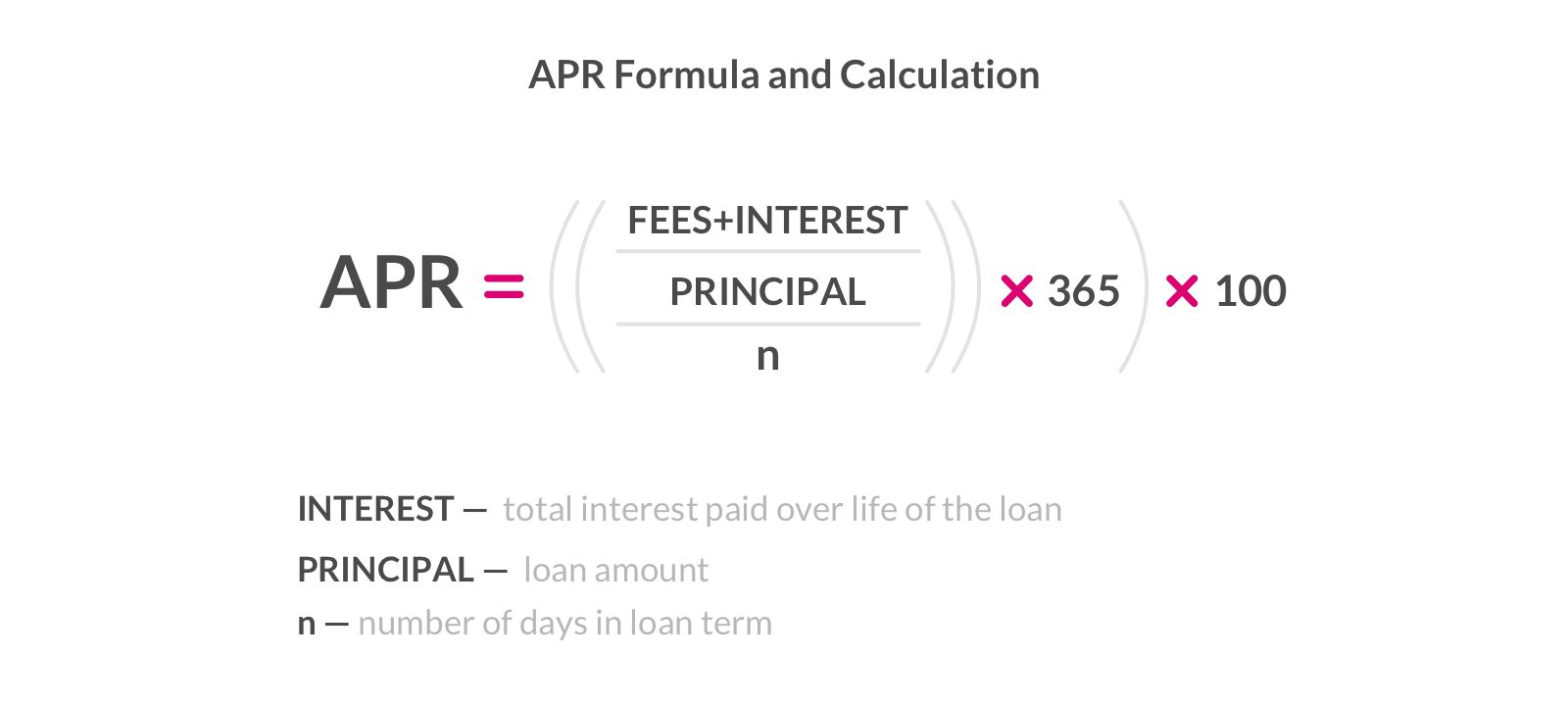Home>Finance>How Does Capital Investment Lead To Economic Growth?


Finance
How Does Capital Investment Lead To Economic Growth?
Modified: December 30, 2023
Learn how capital investment in finance leads to economic growth and drives sustainable development. Explore the relationship between finance and economic prosperity.
(Many of the links in this article redirect to a specific reviewed product. Your purchase of these products through affiliate links helps to generate commission for LiveWell, at no extra cost. Learn more)
Table of Contents
- Introduction
- Importance of Capital Investment
- The Relationship between Capital Investment and Economic Growth
- Factors Influencing the Impact of Capital Investment on Economic Growth
- Examples of Successful Capital Investment Leading to Economic Growth
- Challenges and Risks Associated with Capital Investment
- Government Policies and Initiatives to Promote Capital Investment and Economic Growth
- Conclusion
Introduction
Capital investment plays a crucial role in driving economic growth and development. It involves the allocation of resources towards the production of goods, services, and infrastructure that enhances productivity, stimulates innovation, and creates employment opportunities. By investing in physical assets such as machinery, equipment, technology, and infrastructure, countries and businesses can expand their production capacity and improve overall efficiency.
In this article, we will explore the relationship between capital investment and economic growth, highlighting its importance and the factors that influence its impact. We will also look at real-life examples of successful capital investments and discuss the challenges and risks associated with such investments. Furthermore, we will delve into the role of government policies and initiatives in promoting capital investment and fostering economic growth.
Capital investment is crucial for sustained economic growth as it drives productivity improvements and fosters innovation. When businesses invest in new technologies, research and development, and human capital, they can enhance their production capabilities and develop new products and services. This, in turn, leads to higher efficiency, increased market competitiveness, and improved living standards for individuals.
Capital investment also plays a significant role in attracting foreign direct investment (FDI) and promoting international trade. Countries with robust and modern infrastructure, advanced technologies, and skilled labor forces are more likely to attract foreign companies seeking to expand their operations. This inflow of FDI not only creates job opportunities but also facilitates knowledge transfer, technology adoption, and the development of local industries.
However, it is important to note that capital investment alone is not sufficient for economic growth. It needs to be complemented by other factors such as a stable macroeconomic environment, sound institutions, favorable business regulations, access to finance, and a skilled labor force. These factors create an enabling environment for capital investment to thrive and have a positive impact on the economy.
Importance of Capital Investment
Capital investment plays a pivotal role in driving economic growth and development. It is vital for businesses, governments, and countries as a whole to make strategic investments in physical assets, technology, and infrastructure to support productivity, innovation, and overall economic advancement.
One of the key reasons why capital investment is important is its ability to increase productivity. By investing in modern technologies, machinery, and equipment, businesses can improve their production processes, streamline operations, and enhance efficiency. This allows them to produce more output with the same or fewer resources, leading to increased productivity and profitability.
In addition to productivity gains, capital investment is also crucial for stimulating innovation. Investments in research and development (R&D), technology, and human capital can drive technological advancements and promote the development of new products, services, and processes. Innovation not only helps businesses stay competitive in the market but also leads to the creation of new industries and the generation of high-quality jobs.
Furthermore, capital investment has a significant impact on job creation and employment. When businesses invest in expanding their operations, building new facilities, or adopting new technologies, they create job opportunities. This not only reduces unemployment but also contributes to the overall economic well-being of individuals and communities.
Another important aspect of capital investment is its role in improving infrastructure. Investment in infrastructure projects such as roads, bridges, airports, and ports not only enhances connectivity and accessibility but also facilitates trade and economic activities. Good infrastructure is essential for attracting foreign direct investment, promoting tourism, and supporting the growth of various industries.
Moreover, capital investment has positive spillover effects on other sectors of the economy. For example, investments in the manufacturing sector can lead to increased demand for raw materials, thereby benefiting the agricultural and mining sectors. Similarly, investments in the construction sector can generate demand for building materials, contributing to the growth of related industries.
Capital investment also plays a crucial role in attracting foreign direct investment (FDI). Countries with modern infrastructure, advanced technologies, and skilled labor forces are more attractive to foreign investors seeking to expand their operations. The inflow of FDI not only brings capital but also facilitates knowledge transfer and technology adoption, which further accelerates economic growth.
In summary, capital investment is essential for driving economic growth, improving productivity, fostering innovation, creating employment opportunities, and improving infrastructure. It is a vital component of both national and business strategies to achieve sustainable economic development and improve the living standards of individuals.
The Relationship between Capital Investment and Economic Growth
The relationship between capital investment and economic growth is complex and multifaceted. While there is a strong correlation between the two, it is important to understand the mechanisms through which capital investment influences economic growth.
Capital investment is a driver of economic growth as it contributes to the expansion of production capacity and enhances productivity. When businesses invest in physical assets, machinery, equipment, and technology, they can increase their output and meet growing demand. This leads to economic expansion and higher GDP levels.
Increased capital investment can also lead to technological advancements and innovation, which are crucial for sustained economic growth. Investments in research and development (R&D) and the adoption of new technologies enable businesses to develop new products, improve processes, and gain a competitive edge in the market. This leads to productivity gains and economic growth.
Furthermore, capital investment promotes employment and job creation. When businesses invest in expanding their operations or adopting new technologies, they often require additional labor. This stimulates job growth and reduces unemployment rates. Increased employment levels, in turn, contribute to higher consumer spending and drive economic growth through increased demand for goods and services.
It is important to note that the impact of capital investment on economic growth can be influenced by various factors. The efficiency with which capital is utilized, the quality of infrastructure, the regulatory environment, and the availability of skilled labor all play a role in determining the magnitude of the impact.
Additionally, the relationship between capital investment and economic growth is not linear. While initial investments can lead to significant growth, diminishing returns may occur over time. This is because as the economy reaches its production capacity, further investments may have a smaller impact on output and growth. However, continuous investment in innovation and technological advancements can help mitigate these diminishing returns and sustain economic growth in the long run.
In summary, capital investment and economic growth are closely intertwined. Capital investment drives economic growth by increasing production capacity, enhancing productivity, stimulating innovation, and creating employment opportunities. The relationship between the two is influenced by various factors, and the impact of capital investment on economic growth may diminish over time. Nonetheless, sustained investments in capital and continuous innovation are essential for fostering long-term economic growth and development.
Factors Influencing the Impact of Capital Investment on Economic Growth
While capital investment is generally recognized as a driver of economic growth, its impact can vary significantly depending on several factors. Understanding these factors is essential for maximizing the positive effects of capital investment on economic growth and mitigating potential limitations.
One crucial factor influencing the impact of capital investment on economic growth is the efficiency with which the investment is utilized. Efficient allocation of capital involves investing in productive sectors, utilizing resources effectively, and implementing sound management practices. When capital is appropriately allocated, it leads to increased productivity, improved competitiveness, and enhanced economic growth.
Infrastructure quality is another critical factor that influences the impact of capital investment on economic growth. Investments in physical infrastructure, such as transportation networks, power grids, and telecommunications systems, facilitate efficient resource allocation, reduce transaction costs, and boost productivity. High-quality infrastructure is essential for attracting further investments, promoting trade, and fostering economic growth.
The availability of skilled labor is also a significant determinant of the impact of capital investment on economic growth. Investments in human capital through education and training programs ensure a competent and adaptable workforce. Skilled workers can effectively utilize capital-intensive technologies, enhance innovation, and contribute to productivity growth. Additionally, a skilled labor force attracts further investments, as businesses are more likely to invest in countries with a capable workforce.
The regulatory environment and ease of doing business also play a crucial role in influencing the impact of capital investment on economic growth. A favorable business environment, including transparent regulations, efficient bureaucratic procedures, and secure property rights, encourages investment and facilitates capital mobilization. On the other hand, an unfavorable regulatory environment can deter investments, stifle innovation, and hinder economic growth.
Access to financing is another factor that significantly affects the impact of capital investment on economic growth. Adequate access to credit and financial services allows businesses to fund investment projects, acquire necessary assets, and expand operations. Efficient financial systems promote capital mobilization, encourage entrepreneurship, and facilitate the allocation of resources to productive sectors, leading to higher economic growth.
Macroeconomic stability, including low inflation rates, fiscal discipline, and stable exchange rates, also plays a vital role in determining the impact of capital investment on economic growth. A stable macroeconomic environment provides certainty and reduces investment risks, fostering a conducive atmosphere for capital investment and economic expansion.
Finally, the level of technology absorption and innovation capacity influences the impact of capital investment on economic growth. Investments in research and development (R&D), technology adoption, and knowledge transfer contribute to technological advancements, enhance productivity, and drive economic growth. Countries that can effectively absorb and adapt new technologies from foreign sources can significantly maximize the impact of capital investment on their economic growth.
In summary, various factors influence the impact of capital investment on economic growth. Efficient capital allocation, high-quality infrastructure, skilled labor force, favorable regulatory environment, access to financing, macroeconomic stability, and technological absorption capacity all play critical roles. By addressing and optimizing these factors, countries and businesses can enhance the positive impact of capital investment on economic growth and foster sustainable development.
Examples of Successful Capital Investment Leading to Economic Growth
Capital investment has been instrumental in driving economic growth in various countries around the world. Let’s take a look at some successful examples where strategic capital investments have had a transformative impact on their respective economies.
1. South Korea: In the 1960s, South Korea went through a rapid industrialization phase known as the “Miracle on the Han River.” The government made significant capital investments in infrastructure, education, and technology. This investment, combined with a focus on export-oriented industries, propelled South Korea’s economy to become one of the world’s largest. Today, the country is known for its advanced technology, automotive, and electronics industries.
2. China: China’s economic rise in recent decades is largely attributed to capital investment. The government initiated economic reforms and invested heavily in infrastructure development, such as high-speed rail networks and modern ports. This investment, coupled with policies to attract foreign direct investment, led to the expansion of manufacturing industries. China now boasts the world’s second-largest economy, driven by sectors like electronics, automotive, and telecommunications.
3. Germany: Germany’s success as an industrial powerhouse can be attributed to continuous capital investments in research and development, advanced manufacturing technologies, and vocational training. The country’s renowned “Mittelstand” businesses, which are small and medium-sized enterprises (SMEs) focused on niche markets, have been at the forefront of innovation and export-oriented growth. Germany’s investments in high-quality infrastructure, education, and vocational training have played a key role in its globally competitive manufacturing sector.
4. United States: The United States has a long history of capital investment driving economic growth. Notable examples include investments in the aerospace industry, which led to the development of NASA and the boom of the U.S. space program. Additionally, investments in technology and innovation hubs like Silicon Valley have resulted in the growth of the tech sector and the emergence of global tech giants. The country’s focus on research and development, coupled with access to venture capital, has fostered a culture of entrepreneurship and innovation.
5. Rwanda: Despite being a small, landlocked country in East Africa, Rwanda has experienced remarkable economic growth in recent years. The government has prioritized capital investment in infrastructure, particularly in the areas of transport, energy, and information communication technology. These investments have improved connectivity, attracted foreign direct investment, and supported the development of industries such as tourism, manufacturing, and information technology. Rwanda’s commitment to creating a conducive business environment and investing in quality infrastructure has helped propel its economic growth.
These examples demonstrate the transformative power of strategic capital investment in driving economic growth. By investing in infrastructure, technology, education, and innovation, countries can create an enabling environment for businesses to thrive, attract foreign investment, and promote industry development. These successes serve as important case studies for other countries seeking to leverage capital investment as a catalyst for economic growth and development.
Challenges and Risks Associated with Capital Investment
While capital investment holds the potential for significant economic benefits, there are also challenges and risks that need to be considered. Understanding and effectively managing these challenges is crucial for ensuring the success of capital investment initiatives.
1. Market Volatility: Fluctuations in the market, including economic downturns, changes in consumer behavior, and shifts in global trade dynamics, can pose challenges to capital investment. Uncertain market conditions can impact the returns on investment and potentially reduce the profitability of projects.
2. Regulatory and Political Risks: Regulatory hurdles and political instability can hinder capital investment. Complex regulations, bureaucratic processes, and uncertain policy environments can create barriers to investment and increase project costs. Additionally, changes in government policies or political unrest can introduce instability and discourage investments.
3. Technological Obsolescence: Rapid advancements in technology pose a risk of investments becoming obsolete. Capital-intensive industries, such as manufacturing or telecommunications, need to continually upgrade their technologies to stay competitive. Failure to anticipate and adapt to technological changes can result in investments that lose their value or become outdated.
4. Financial Risks: Capital investments often require significant financial resources, which can pose risks if they are not managed effectively. Factors such as inadequate access to financing, high interest rates, or unstable currency exchange rates can impact the viability and profitability of investment projects. Financial risks also include the potential for project cost overruns or delays.
5. Environmental and Social Impact: Capital investments, particularly in industries with significant environmental or social consequences, face scrutiny and potential backlash. Issues such as pollution, deforestation, displacement of communities, or violation of human rights can lead to reputational damage and legal challenges, affecting the success and sustainability of investments.
6. Project Management Challenges: Large-scale capital investment projects can face challenges related to project management, including coordination of various stakeholders, project delays or cost overruns, and quality control issues. Proper project planning, risk assessment, and effective project management practices are crucial to mitigate these challenges.
7. Access to Skilled Labor: Capital-intensive industries require a skilled workforce that can effectively utilize the invested capital. A lack of skilled labor or difficulties in attracting and retaining talent can hinder the successful implementation and operation of capital investment projects.
8. Supply Chain Risks: Dependence on complex supply chains can expose capital investment projects to risks such as disruptions in raw material supply, transportation delays, or geopolitical tensions. These risks can impact project timelines, costs, and overall success.
To mitigate these challenges and risks associated with capital investment, it is crucial to conduct thorough feasibility studies, risk assessments, and due diligence before making investment decisions. Governments and businesses also need to adopt transparent and stable regulatory frameworks, foster a favorable investment climate, and prioritize the development of a skilled labor force. Additionally, diversification of investment portfolios and proactive monitoring of market dynamics can help mitigate financial and market-related risks.
While challenges and risks are inherent in capital investment, careful planning, risk management, and adaptability can help ensure successful outcomes and maximize the potential benefits of such investments.
Government Policies and Initiatives to Promote Capital Investment and Economic Growth
Governments play a crucial role in fostering capital investment and driving economic growth. Through the implementation of effective policies and initiatives, governments can create an environment conducive to investment, innovation, and sustainable economic development. Let’s explore some of the key policies and initiatives that governments employ to promote capital investment and economic growth.
1. Investment Incentives: Governments often offer various incentives to attract capital investments. These may include tax breaks, investment grants, subsidies, or accelerated depreciation allowances. By providing financial and fiscal incentives, governments encourage businesses to invest in specific industries or regions, stimulating economic growth and generating employment opportunities.
2. Infrastructure Development: Governments recognize the importance of quality infrastructure in promoting capital investment and economic growth. Investments in transportation networks, energy grids, communication systems, and other public infrastructure can enhance connectivity, reduce business costs, attract foreign investment, and spur economic activity in both urban and rural areas.
3. Streamlined Regulatory Processes: Governments can facilitate capital investment by implementing streamlined and transparent regulatory processes. Simplifying bureaucratic procedures, reducing red tape, and ensuring clarity in business regulations create a favorable investment climate. This improves investor confidence, reduces transaction costs, and encourages investment in various sectors of the economy.
4. Access to Finance: Governments may implement policies to enhance access to financing, especially for small and medium-sized enterprises (SMEs) and startups. This includes establishing or supporting development finance institutions, providing guarantees to lenders, facilitating access to venture capital, and promoting financial literacy programs. Improved access to finance enables businesses to fund investment projects and drives economic growth.
5. Support for Research and Development (R&D): Governments play a critical role in promoting innovation and technological advancements through support for R&D initiatives. This can include funding research institutions, providing tax incentives for R&D spending, and encouraging collaboration between academia, industry, and research organizations. Investments in R&D drive technological progress, improve productivity, and enhance the competitiveness of businesses in the global market.
6. Education and Workforce Development: Governments recognize the importance of a skilled workforce in attracting capital investment and promoting economic growth. Investing in education and vocational training programs ensures that the labor force possesses the necessary skills for the modern economy. Governments can collaborate with educational institutions and businesses to align curricula with industry needs and facilitate lifelong learning opportunities.
7. Trade and Investment Promotion: Governments actively engage in trade promotion and investment attraction strategies to enhance capital flows and stimulate economic growth. This includes participating in international trade agreements, establishing economic zones or free trade zones, and conducting investment roadshows and trade missions to showcase investment opportunities. These efforts create an environment conducive to foreign direct investment and promote international trade.
8. Support for Entrepreneurship: Governments foster entrepreneurship by providing support programs and frameworks for startups and entrepreneurs. This may include incubation centers, access to mentorship and networking opportunities, venture capital funding, and regulatory frameworks that facilitate business creation and growth. Entrepreneurship-driven capital investments lead to innovation, job creation, and economic diversification.
9. Sustainable Development Initiatives: Governments increasingly prioritize sustainable development and responsible investment. They may introduce policies and incentives that promote environmentally friendly and socially responsible investments. This includes measures to address climate change, support renewable energy projects, and promote corporate social responsibility practices to ensure long-term economic and environmental sustainability.
By implementing these policies and initiatives, governments can create an enabling environment for capital investment, foster economic growth, and attract local and foreign investors. Collaboration between the public and private sectors is essential in developing and implementing effective strategies that promote sustainable economic development.
Conclusion
Capital investment plays a pivotal role in driving economic growth by fueling productivity improvements, stimulating innovation, creating employment opportunities, and enhancing infrastructure. Through strategic allocation of resources towards physical assets, technology, and infrastructure, countries and businesses can expand their production capacity and improve overall efficiency.
The relationship between capital investment and economic growth is complex, with various factors influencing its impact. Efficient capital allocation, high-quality infrastructure, skilled labor, favorable regulatory environment, access to finance, macroeconomic stability, and technological absorption capacity are all critical factors determining the magnitude of the impact.
Successful examples from around the world, including South Korea, China, Germany, the United States, and Rwanda, demonstrate the transformative power of capital investment. These countries utilized strategic investments in infrastructure, technology, education, and innovation to drive economic growth and achieve long-term development goals.
However, capital investment is not without its challenges and risks. Market volatility, regulatory barriers, technological obsolescence, financial risks, environmental and social impact concerns, project management challenges, access to skilled labor, and supply chain risks all pose potential obstacles that need to be addressed and managed effectively.
Governments play a crucial role in fostering capital investment and economic growth through the implementation of supportive policies and initiatives. Investment incentives, infrastructure development, streamlined regulations, access to finance, support for R&D, education and workforce development, trade promotion, entrepreneurship support, and sustainable development initiatives are key areas where governments can drive capital investment and create an enabling environment for economic growth.
In conclusion, capital investment serves as a catalyst for economic growth, innovation, and development. When utilized strategically and supported by favorable government policies, it can drive productivity improvements, create employment opportunities, enhance infrastructure, and promote sustainable economic growth. The continued focus on strategic capital investment is essential for countries and businesses striving for long-term economic prosperity and improved standards of living.














